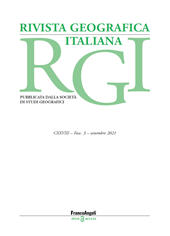Tourism Peaks on the Three Peaks : using big data to monitor where, when and how many visitors impact the Dolomites UNESCO World Heritage Site
59-81 p.
Overtourism studies are increasingly focused on the relationship between tourists and residents. This includes the livability of the destination and the wellbeing of its residents; the growth of the tourism sector (particularly unchecked or unlimited growth), as well as the threat to natural heritage, such as beaches and mountains. A number of researchers have also highlighted the popularity of the term, as well as the lack of a theoretical understanding of the implications of it, and practical solutions to the problems posed by overtourism. This research aims to monitor the impact of, and understand the problems posed by, overtourism through approaching the phenomenon through the lens of big data analytics. The location of thisresearch is a UNESCO World Heritage site in Italy, namely the Dolomites. By using telco data, we were able to apply a big data analysis of a destination in order to monitor the movement of tourists and day visitors.
By analyzing their behaviour at the destination, it has been possible to quantify daily visitors and analyse how they impact this natural site. In addition, it has beenpossible to compare statistical data with big data, which offers new insights into tourism at the destination. This research, by exploiting the value of big data in tourism, creates a heritage usage rate as well as new indicators for the measurement of overtourism. Ultimately, this can help to control tourism flows and mitigate negative externalities. [Publisher's text].
Overtourism studies are increasingly focused on the relationship between tourists and residents. This includes the livability of the destination and the wellbeing of its residents; the growth of the tourism sector (particularly unchecked or unlimited growth), as well as the threat to natural heritage, such as beaches and mountains. A number of researchers have also highlighted the popularity of the term, as well as the lack of a theoretical understanding of the implications of it, and practical solutions to the problems posed by overtourism. This research aims to monitor the impact of, and understand the problems posed by, overtourism through approaching the phenomenon through the lens of big data analytics. The location of this research is a UNESCO World Heritage site in Italy, namely the Dolomites. By using telco data, we were able to apply a big data analysis of a destination in order to monitor the movement oftourists and day visitors.
By analyzing their behaviour at the destination, it has been possible to quantify daily visitors and analyse how they impact this natural site. In addition, it has been possible to compare statistical data with big data, which offers new insights into tourism at the destination. This research, by exploiting the value of big data in tourism, creates a heritage usage rate as well as new indicators for the measurement of overtourism. Ultimately, this can help to control tourism flows and mitigate negative externalities. [Publisher's text].
Fait partie de
Rivista geografica italiana : CXXVIII, 3, 2021-
Articles du même numéro (disponibles individuellement)
-
Informations
Code DOI : 10.3280/rgioa3-2021oa12532
ISSN: 0035-6697
KEYWORDS
- overtourism, big data, Dolomiti UNESCO, flussi turistici
- overtourism, big data, Dolomites UNESCO, tourism flows


